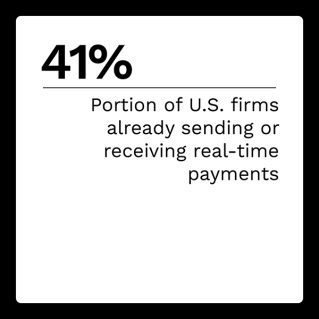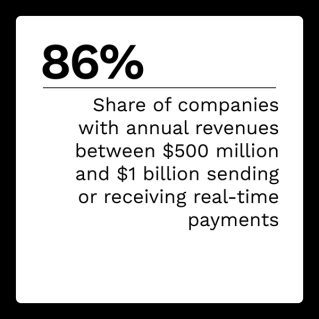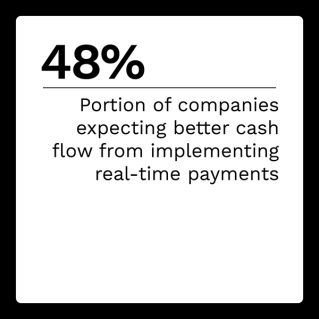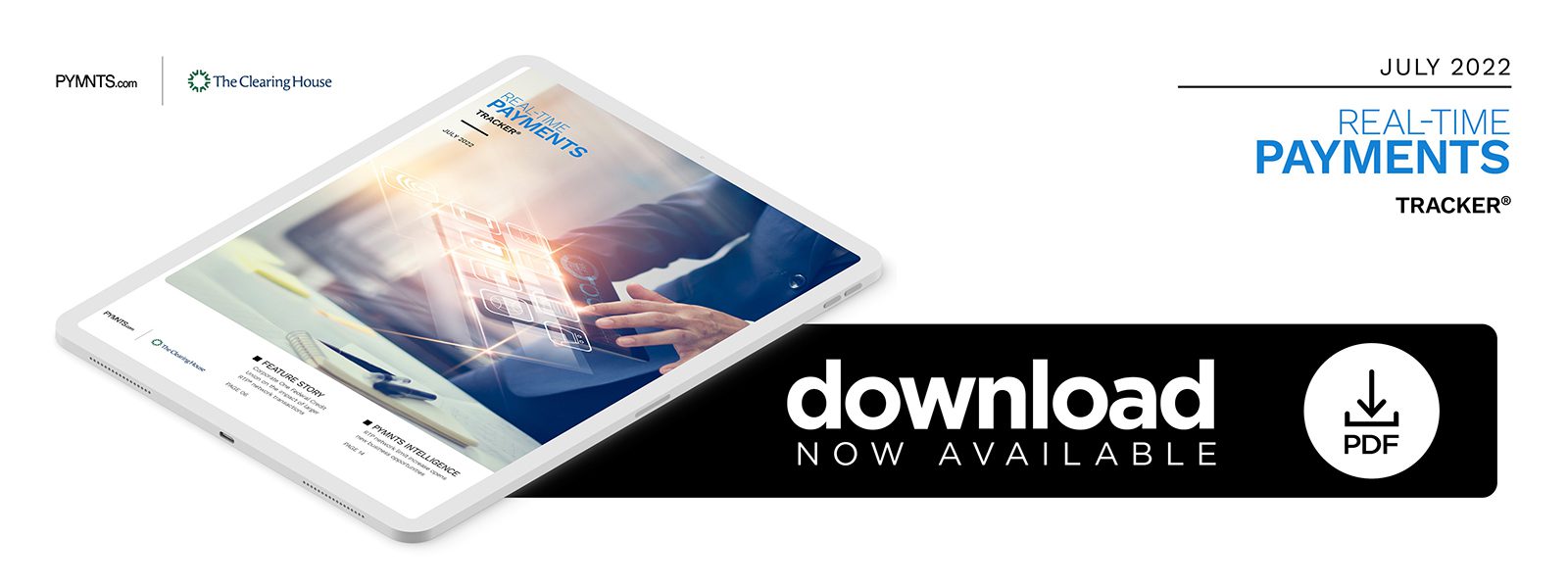Corporates, Consumers Give Real-Time Payments Fresh Look With $1 Million Transaction Limit

Forty-one percent of firms in the United States already use the RTP® network to send or receive payments. The recent increase of the network’s transaction limit from $100,000 to $1 million dramatically increases the utility of real-time payments on the network. The increase accompanies such trends as growing interest among corporate buyers in making electronic purchases of more than $500,000, as well as increases in the cost of basic needs such as housing and cars, as even down payments for these purchases exceeded the previous limit.
Accepting and sending money in real time puts businesses at an advantage over their competitors because companies will prefer to do business with those offering real-time payments over those that do not. At the same time, as real-time payments continue to become more common and even expected, those who are not onboard risk being at a competitive disadvantage. The advantages of payments in the RTP network include more than the speed of payments. Two-way messaging enables the entire transaction to be completed in real time, without either party needing to marry-up information from different channels before a transaction can be considered closed. Both parties have immediate confirmation that funds have been moved directly from one account to the other, and no one is waiting days or weeks for the completion or confirmation of payment.
In this month’s Real-Time Payments Tracker®, PYMNTS examines the impact of the RTP network increase on financial institutions (FIs), businesses and even regular consumers and how it brings the U.S. one step closer to ubiquitous real-time payments.
Around The Real-Time Payments Space
 Following the economic uncertainty that characterized the early days of the pandemic, the construction industry now faces rising costs that are whittling down margins. Even as contractors’ transactions increase, late payments are also rising. While 40% of general contractors cited project financing as a source of payment delays, 30% said poor communication drives a portion of those late payments. Simplifying and streamlining the communications around billing and settling the large-sum transactions associated with construction could have a significant impact, as 41% of respondents said late payments ultimately reduce their profits.
Following the economic uncertainty that characterized the early days of the pandemic, the construction industry now faces rising costs that are whittling down margins. Even as contractors’ transactions increase, late payments are also rising. While 40% of general contractors cited project financing as a source of payment delays, 30% said poor communication drives a portion of those late payments. Simplifying and streamlining the communications around billing and settling the large-sum transactions associated with construction could have a significant impact, as 41% of respondents said late payments ultimately reduce their profits.
A recent survey of executives from companies with $500 million to $1 billion in annual revenue found that assurance against failed payments is one of the most valued benefits of real-time payments. Fourteen percent of respondents said that one of the top benefits of sending real-time payments is mitigating against failed payments, while 7% said the same of receiving real-time payments. Among businesses not yet using real-time payments, 18% cited further mitigating the risk of payment failure as one of the expected benefits of implementing these payments.
For more on these stories and other real-time payments developments, check out the Tracker’s News and Trends section.
Corporate One Federal Credit Union on the Benefits of Larger RTP Network Transactions
Mortgages, escrow payments and car loans are all important areas for credit unions (CUs), and they are also areas where the RTP network saw growth following the transaction limit increase to $1 million.
In this month’s feature story, Melissa Ashley, CEO at Corporate One Federal Credit Union, talks about the positive reception of its RTP network pilot offering for member CUs and the anticipated benefits member CUs are looking forward to as Corporate One rolls out a wider implementation.
implementation.
PYMNTS Intelligence: RTP Network Increase Opens New Business Opportunities
The recent increase of the RTP network transaction limit from $100,000 to $1 million has garnered growth in network transactions, even with transaction volumes already growing by double digits in preceding quarters. The advantages to this transaction limit increase can be found in many industries, and real-time payments have become integral in business-to-business (B2B) payments, with larger companies showing the greatest interest and usage.
This month’s PYMNTS Intelligence takes a look at how the RTP network transaction limit increase is already changing how participants send and receive payments, as well as the future potential.
About the Tracker
The Real-Time Payments Tracker®, a PYMNTS and The Clearing House collaboration, examines the latest trends and developments shaping the real-time payments space and the impact on payments of raising the RTP network transaction limit to $1 million.
For all PYMNTS B2B coverage, subscribe to the daily B2B Newsletter.
